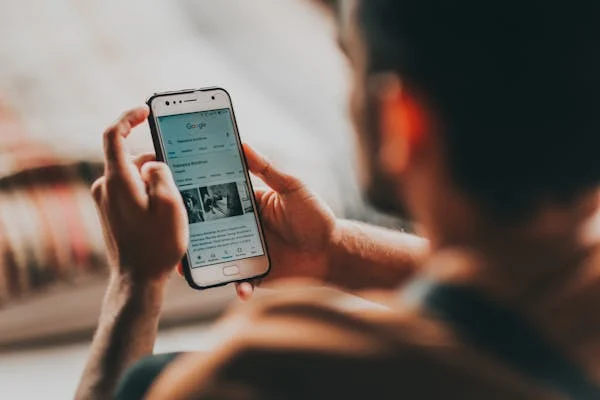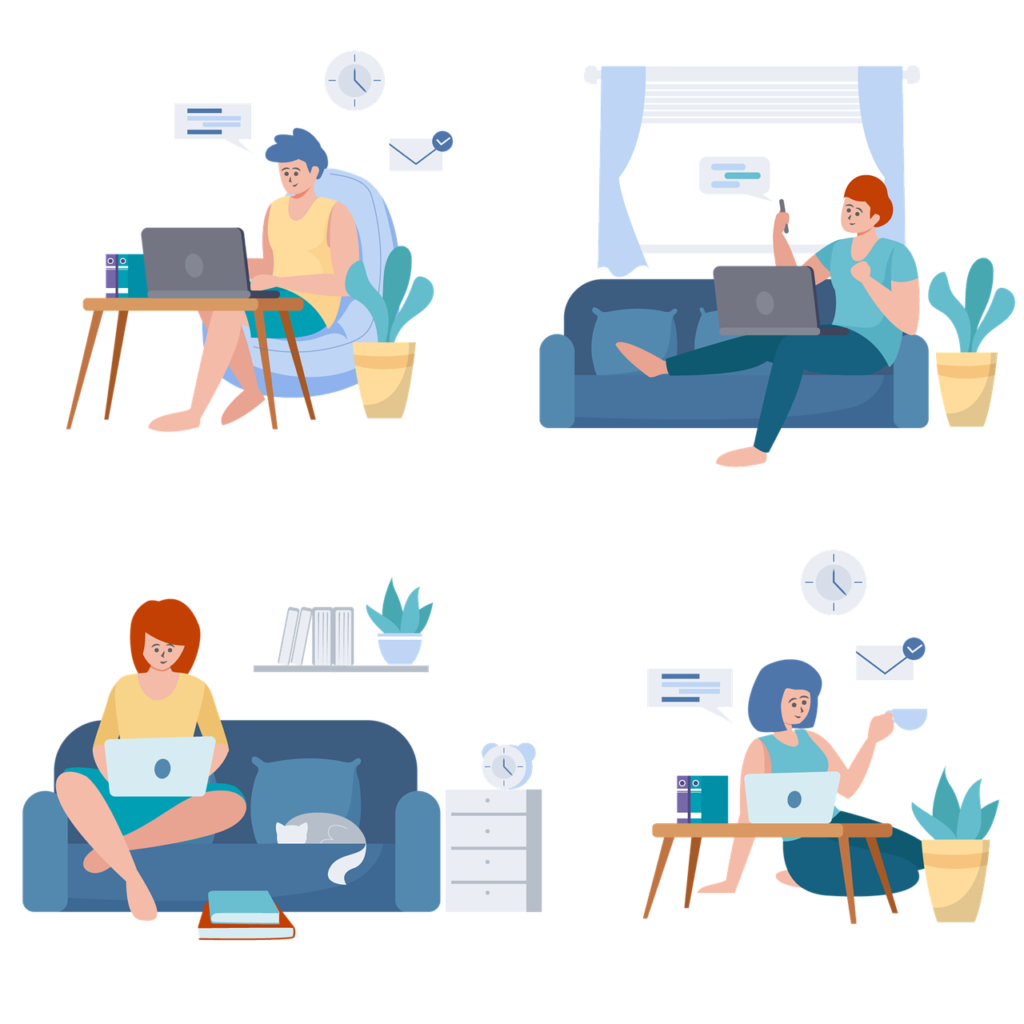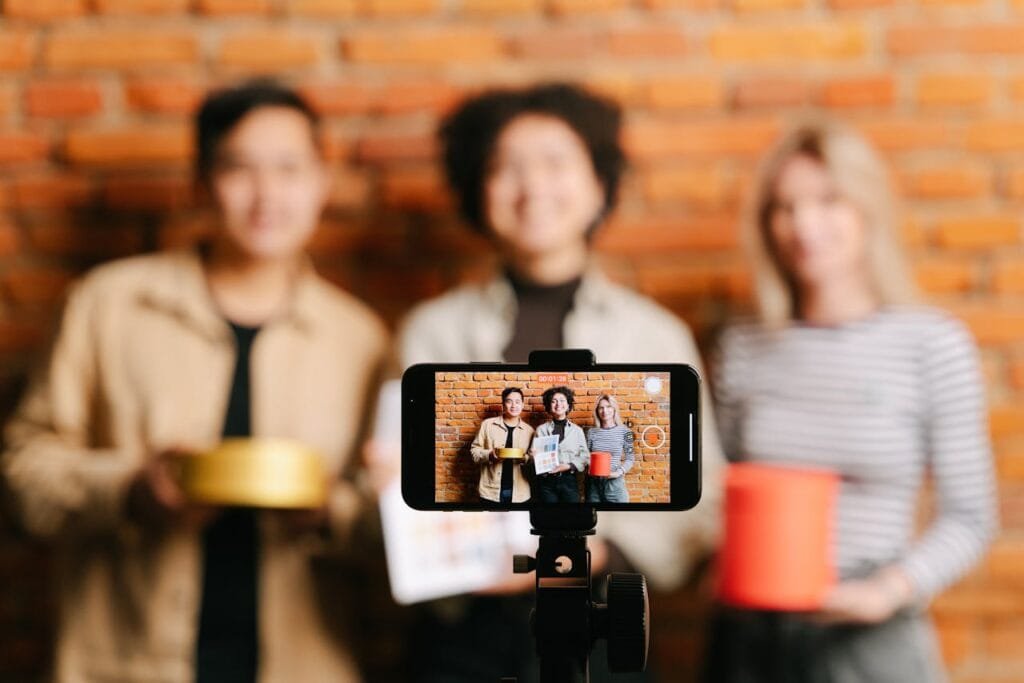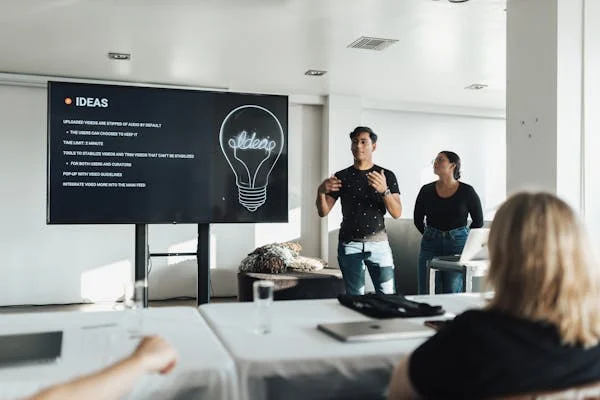SMS marketing is a powerful tool that businesses can use to reach customers directly on their mobile devices. With high open rates and instant delivery, SMS campaigns can effectively drive engagement and boost sales. However, to stand out and make an impact, it’s essential to be creative and strategic. In this article, we will explore various innovative SMS marketing campaign ideas that are both engaging and actionable. Whether you’re looking to promote a new product, enhance customer loyalty, or increase foot traffic to your store, these ideas will help you achieve your goals.
Flash Sales and Limited-Time Offers
Segmenting Your Audience
To maximize the impact of your flash sales and limited-time offers, segment your audience based on their buying behaviors and preferences. By targeting specific groups with tailored offers, you can increase the relevance of your messages and improve conversion rates.
For instance, segment your audience into categories such as frequent buyers, occasional shoppers, and inactive customers. Send a more aggressive discount to inactive customers to re-engage them, while offering a smaller, exclusive deal to frequent buyers as a reward for their loyalty.
Creating an Exclusive Feel
Make your flash sales and limited-time offers feel exclusive to add an extra layer of appeal. Use language that emphasizes exclusivity, such as “Exclusive Offer for Our VIP Customers” or “Secret Sale Just for You.”
This can make recipients feel special and more likely to take action. Additionally, consider creating a private sale event where only a select group of customers receives the discount code. This can generate a sense of exclusivity and urgency.
Using Countdown Timers
Incorporating countdown timers in your SMS messages can visually emphasize the urgency of your flash sales and limited-time offers. While SMS itself doesn’t support rich media, you can include a link to a landing page that features a countdown timer. This creates a sense of urgency and encourages customers to act quickly. For example, “Hurry! Our 24-hour flash sale ends soon. Click here to shop now and see the countdown.”
Partnering with Influencers
Collaborate with influencers to promote your flash sales and limited-time offers. Influencers can help you reach a broader audience and add credibility to your promotion. Have influencers announce the sale on their social media platforms and direct their followers to sign up for your SMS notifications to receive the exclusive discount.
This not only drives traffic but also helps you grow your SMS subscriber list. For example, “Follow [Influencer Name] and sign up for our SMS alerts to get an exclusive 30% off on your next purchase.”
Incorporating a Surprise Element
Add a surprise element to your flash sales to keep customers intrigued and excited. For instance, send an SMS announcing a mystery discount where customers have to click a link to reveal their unique discount code.
This gamification of the discount can increase engagement and make the shopping experience more fun. For example, “Surprise! Click here to reveal your mystery discount – up to 50% off!”
Follow-Up Messages
After your flash sale or limited-time offer ends, follow up with customers who showed interest but didn’t complete a purchase. Send a reminder about the missed opportunity and offer a secondary, smaller discount to encourage them to come back.
This can help recover some of the lost sales. For instance, “We noticed you missed our flash sale. Here’s a 10% off code for a limited time as a second chance. Don’t miss out again!”
Combining SMS with Other Channels
Integrate your SMS flash sales with other marketing channels to amplify their reach. Promote the sale on your social media platforms, email newsletters, and website, but make the SMS subscribers feel they are getting the best deals by providing them with exclusive or early access.
For example, announce the sale on social media but mention that SMS subscribers will get an additional 10% off or early access an hour before the general public.
Using Data Analytics
Utilize data analytics to assess the performance of your flash sales and limited-time offers. Track metrics such as open rates, click-through rates, conversion rates, and overall sales generated from the campaign.
Analyzing this data will help you understand what works best for your audience and refine your strategy for future campaigns. For example, if you notice that a particular time of day yields higher conversions, schedule your future flash sales during that period.
Ensuring Mobile Optimization
Since SMS marketing is inherently mobile, ensure that the entire customer experience is optimized for mobile devices. This includes having a mobile-friendly landing page for your flash sale, easy-to-navigate product pages, and a seamless checkout process.
Any friction in the user experience can lead to drop-offs and lost sales. Test the entire process on various devices to ensure a smooth experience from the SMS message to the final purchase.
Leveraging FOMO (Fear of Missing Out)
FOMO is a powerful psychological trigger that you can leverage in your flash sales and limited-time offers. Highlight the scarcity and urgency of the deal to create a sense of urgency. Phrases like “Only 10 left in stock” or “Sale ends in 2 hours” can prompt quicker decision-making. For example, “Don’t miss out! Only 5 items left at 50% off. Shop now before they’re gone.”
Customer Engagement
Engage your customers during the flash sale by encouraging them to share their purchases or experiences on social media. You can even create a specific hashtag for the event.
Reward participants with a chance to win a prize or an additional discount on their next purchase. This not only increases engagement but also promotes your sale to a wider audience through social proof.
Customer Loyalty Programs

Designing a Tiered Loyalty Program
Creating a tiered loyalty program can incentivize customers to spend more to reach higher tiers and enjoy greater rewards. Design a program with multiple levels, such as Bronze, Silver, Gold, and Platinum, each offering increasing benefits. Customers can move up the tiers based on their spending or engagement.
For example, Bronze members might receive a 5% discount on all purchases, while Platinum members enjoy a 20% discount plus early access to new products. Use SMS to notify customers of their tier status and the benefits they can unlock as they advance. For instance, “Congrats! You’ve reached Silver status. Enjoy 10% off on your next purchase.”
Personalizing Rewards
Personalization is key to making your loyalty program more appealing. Use customer data to tailor rewards to individual preferences. For instance, if a customer frequently buys skincare products, offer them a special discount on their favorite items.
Segment your SMS list based on purchase history and send personalized messages that make the customer feel valued. For example, “Hi [Name], enjoy 15% off on your favorite skincare products this week. Use code SKIN15.”
Gamifying the Loyalty Experience
Adding gamification elements to your loyalty program can make it more engaging and fun. Create challenges or missions that customers can complete to earn points or rewards. For example, offer points for actions like making a purchase, referring a friend, or writing a review.
Use SMS to notify customers of new challenges and track their progress. For instance, “Complete 3 purchases this month to earn 500 bonus points! You’re just 2 purchases away.”
Exclusive Events and Previews
Reward your loyal customers by giving them access to exclusive events and product previews. Host special events such as VIP sales, private shopping nights, or product launch parties.
Send SMS invitations to your top-tier members, making them feel special and appreciated. For example, “You’re invited to our exclusive VIP sale this Friday. Enjoy early access and special discounts. RSVP now!”
Birthday and Anniversary Rewards
Show your customers that you remember and appreciate them by offering special rewards on their birthdays and anniversaries. Send a personalized SMS with a special discount or free gift to celebrate their special day. For instance, “Happy Birthday, [Name]! Enjoy a 20% discount on us. Use code BDAY20 at checkout. Have a fantastic day!”
Referral Bonuses
Encourage your loyal customers to refer their friends and family by offering referral bonuses. Reward both the referrer and the new customer with discounts or points.
Use SMS to promote your referral program and make it easy for customers to share their referral link. For example, “Refer a friend and both of you get 20% off your next purchase! Share this link: [referral link].”
Feedback and Surveys
Involve your loyal customers in the development of your products and services by asking for their feedback. Use SMS to send short surveys and ask for their opinions on new product ideas, services, or overall satisfaction.
Reward participants with points or discounts for their time. For instance, “We value your feedback! Complete this 2-minute survey and earn 100 loyalty points: [survey link].”
Partnering with Other Brands
Expand the value of your loyalty program by partnering with other brands to offer additional rewards. For example, collaborate with a local café to provide a free coffee for your customers who reach a certain spending threshold.
Use SMS to inform customers of these added benefits. For example, “Enjoy a free coffee at [Café Name] when you spend $50 or more with us this month. Just show this message at the café.”
Dynamic Offers
Implement dynamic offers that change based on customer behavior and preferences. Use SMS to send personalized offers that are relevant to each customer’s shopping habits.
For example, if a customer hasn’t made a purchase in a while, send them a special discount to re-engage them. For instance, “We miss you! Here’s 20% off your next purchase. Come back soon!”
Tracking and Analytics
Use advanced tracking and analytics to measure the success of your loyalty program. Monitor key metrics such as redemption rates, repeat purchase rates, and customer retention. Use this data to refine your program and make informed decisions.
For instance, if you notice that a particular reward is very popular, consider expanding that offer. Regularly update your customers on new features and improvements to keep them engaged.
Event Promotions
Building Anticipation for Upcoming Events
Creating anticipation is crucial for a successful event. Start promoting your event well in advance using SMS to build excitement. Send teaser messages that gradually reveal more details about the event. This could include the event theme, special guests, or exclusive activities.
For example, you could send a message like, “Mark your calendar! Something exciting is coming on [date]. Stay tuned for more details.” As the event approaches, increase the frequency of your messages to maintain interest and ensure it remains top of mind.
Offering Exclusive Early Bird Discounts
Encourage early sign-ups and build momentum for your event by offering exclusive early bird discounts to your SMS subscribers. This not only incentivizes early registration but also makes your subscribers feel valued.
For instance, “Get 20% off your ticket if you book before [date]. Use code EARLYBIRD. Limited spots available!” This strategy can also help you gauge initial interest and plan accordingly.
Sending Personalized Invites
Personalization can significantly increase the effectiveness of your event promotions. Use customer data to send personalized invites that address recipients by name and reference their past interactions with your brand.
For example, “Hi [Name], we noticed you enjoyed our last event. Join us for another exciting evening on [date]. Click here to RSVP.” Personalized messages make recipients feel special and more likely to attend.
Utilizing Countdown Reminders
As your event date approaches, send countdown reminders to keep the excitement high and ensure that attendees don’t forget the event. You can send reminders at key intervals, such as one week, three days, and one day before the event.
For example, “Only 3 days left until our big event! Don’t miss out on the fun. Click here for more details.” Countdown reminders create a sense of urgency and help maintain interest.
Providing Event Updates
Keep your attendees informed about any updates or changes to your event. Use SMS to quickly communicate important information such as changes in the event schedule, new guest speakers, or additional activities.
For example, “Exciting news! We’ve added a special guest to our event lineup. Check out the updated schedule here.” Keeping attendees updated ensures they are well-informed and reduces the risk of confusion or miscommunication.
Encouraging Social Sharing
Leverage your attendees to help spread the word about your event by encouraging them to share it on social media. Include social sharing buttons in your SMS messages and create a unique event hashtag. Offer incentives such as entry into a prize draw for those who share the event details.
For example, “Share our event on social media using #EventHashtag and enter to win a special prize! Click here to share.” This strategy can increase your event’s visibility and attract more attendees.
Sending RSVP Confirmations and Reminders
Once attendees have registered for your event, send an RSVP confirmation message with all the necessary details. This should include the event date, time, location, and any specific instructions. Follow up with reminders as the event date approaches to ensure high attendance rates.
For example, “Thank you for registering! Don’t forget, our event is on [date] at [location]. See you there!” Sending reminders ensures that attendees remember the event and are less likely to forget.
Creating Interactive SMS Campaigns
Engage your audience by creating interactive SMS campaigns related to your event. This could include polls, quizzes, or contests that encourage participation and keep the excitement high.
For example, send a quiz related to the event theme with a chance to win a free ticket or special perks at the event. “Answer this quiz question correctly for a chance to win VIP access to our event: [quiz link].” Interactive campaigns create a more engaging experience and can boost attendance.
Offering VIP Access and Exclusive Perks
Entice your audience by offering VIP access and exclusive perks for your event. This could include early entry, reserved seating, or meet-and-greet opportunities with special guests.
Promote these perks through SMS to encourage more sign-ups and add value to the event experience. For example, “Upgrade to VIP for exclusive perks including early entry and reserved seating. Limited VIP tickets available. Click here to upgrade.”
Gathering Post-Event Feedback
After your event, use SMS to gather feedback from attendees. This can provide valuable insights into what went well and where there’s room for improvement. Send a short survey link in your message and offer a small incentive for completing it, such as a discount on future events or a chance to win a prize.
For example, “We hope you enjoyed our event! Please share your feedback and get 10% off your next purchase: [survey link].” Gathering feedback helps you understand attendee satisfaction and improve future events.
Following Up with Event Highlights
Keep the momentum going after your event by sending a follow-up SMS with highlights and thank-yous. Include a link to photos, videos, or a recap of the event.
This not only reinforces a positive experience but also keeps your audience engaged and looking forward to your next event. For example, “Thank you for attending! Check out the event highlights and photos here: [link]. We can’t wait to see you at our next event!”
Integrating with Other Marketing Channels
Integrate your SMS event promotions with other marketing channels for a cohesive strategy. Promote your event on social media, your website, and through email marketing, but offer special perks or exclusive content to your SMS subscribers.
This makes your SMS list feel special and valued, encouraging more sign-ups and higher engagement. For example, “Follow us on social media for live updates during the event, but get exclusive behind-the-scenes access by signing up for our SMS alerts.”
Leveraging Geo-Targeting
Use geo-targeting to send event promotions to customers who are in close proximity to the event location. This can be particularly effective for local events.
For example, “Hey [Name], we’re hosting an event near you this weekend! Join us for exclusive deals and fun activities. Click here for details.” Geo-targeting ensures your messages are relevant to the recipients, increasing the likelihood of attendance.

Product Launch Announcements
Building a Hype Campaign
To ensure a successful product launch, it’s crucial to build excitement and anticipation leading up to the big day. Start by teasing the product launch a few weeks in advance with cryptic messages and hints. Gradually reveal more details as the launch date approaches.
For instance, you can start with a message like, “Something exciting is coming soon! Can you guess what it is?” Follow up with sneak peeks and teaser videos that highlight unique features or benefits of the new product. This approach creates curiosity and keeps your audience engaged.
Offering Early Access or Pre-Orders
Offering early access or pre-orders can create a sense of exclusivity and urgency. Send an SMS to your most loyal customers or VIP members, giving them the first opportunity to purchase the new product.
For example, “Hi [Name], we’re excited to offer you exclusive early access to our new product! Click here to shop now before it’s available to the public.” This not only rewards your loyal customers but also helps generate initial sales momentum.
Creating a Launch Event
Host a special event to celebrate the product launch. This could be a virtual event, an in-store event, or a combination of both. Use SMS to send out invitations and reminders, ensuring that your customers don’t miss the event.
For example, “Join us for the exclusive launch of our new product on [date]. Enjoy live demos, special discounts, and more! RSVP here.” During the event, provide demonstrations, answer questions, and offer special launch-day promotions to encourage purchases.
Leveraging Influencer Partnerships
Partner with influencers to amplify your product launch. Influencers can help you reach a wider audience and lend credibility to your new product. Coordinate with influencers to create unboxing videos, reviews, and social media posts that showcase the product.
Use SMS to announce these collaborations to your audience and drive traffic to the influencer content. For instance, “We’re teaming up with [Influencer Name] to bring you an exclusive first look at our new product. Watch the unboxing video here.”
Utilizing Customer Testimonials
Customer testimonials can add authenticity and build trust during a product launch. Reach out to a select group of loyal customers and offer them an opportunity to try the new product before it launches.
Collect their feedback and use it in your SMS campaigns to provide social proof. For example, “Our new product is getting rave reviews! Here’s what [Customer Name] had to say: ‘It’s a game-changer!’ Be the first to try it. Shop now.”
Offering Limited-Time Launch Discounts
Incentivize your audience to purchase the new product by offering limited-time launch discounts. Create a sense of urgency by emphasizing that the discount is only available for a short period.
For example, “Launch Special: Get 20% off our new product for the next 48 hours only. Use code LAUNCH20 at checkout. Hurry, don’t miss out!” This can drive immediate sales and create a buzz around the product.
Sending Behind-the-Scenes Content
Share behind-the-scenes content to give your audience a glimpse into the product development process. This can include photos or videos of the design and manufacturing stages, interviews with the creators, or stories about the inspiration behind the product.
Use SMS to direct your audience to this exclusive content, making them feel more connected to the brand. For instance, “Ever wondered how our new product was made? Check out this behind-the-scenes video: [link].”
Conducting a Countdown Campaign
A countdown campaign can build excitement and anticipation as the launch date approaches. Send daily or weekly countdown messages to remind your audience of the upcoming launch. Each message can reveal a new feature or benefit of the product.
For example, “Only 5 days left until our big launch! Today’s reveal: [Feature/Benefit]. Stay tuned for more surprises!” This keeps your audience engaged and eagerly anticipating the launch.
Engaging with Interactive Content
Engage your audience with interactive content related to the product launch. This could include quizzes, polls, or contests that encourage participation and generate excitement. For example, create a quiz that matches customers with the best version of your new product based on their preferences.
Use SMS to invite your audience to participate and offer a prize for completing the quiz. “Which version of our new product is perfect for you? Take this quick quiz to find out and enter to win a free one! [link].”
Offering Exclusive Bundles or Packages
Create exclusive bundles or packages that include the new product along with complementary items. This adds value and makes the offer more attractive to customers. Use SMS to promote these bundles and highlight the benefits of purchasing them. For example, “Get our new product along with a special accessory bundle at an exclusive launch price. Limited availability, shop now!”
Providing Post-Launch Support and Updates
After the product launch, continue to engage with your customers by providing post-launch support and updates. Send follow-up messages to thank customers for their purchase and offer additional tips or tutorials on how to use the product.
For example, “Thank you for purchasing our new product! Here are some tips to get the most out of it: [link]. Need help? Reply to this message for support.” This ensures a positive customer experience and encourages repeat business.
Encouraging User-Generated Content
Encourage your customers to share their own experiences with the new product on social media. Create a branded hashtag and ask customers to post photos or videos using the product.
Feature the best posts on your social media channels and send an SMS to invite others to join in. For example, “We love seeing your photos with our new product! Share yours with #NewProductExperience and get featured on our page.”
Measuring and Analyzing Launch Performance
Track the performance of your product launch using metrics such as sales, engagement, and customer feedback. Use this data to assess the success of your SMS campaigns and identify areas for improvement.
Send surveys to gather customer opinions on the product and the launch experience. For example, “We’d love your feedback on our new product! Complete this short survey and get 10% off your next purchase: [survey link].”
Customer Feedback and Surveys
Strategically Timing Your Feedback Requests
Timing is critical when requesting customer feedback to ensure that responses are both fresh and relevant. For example, sending a feedback request immediately after a purchase or service experience can capture the customer’s immediate thoughts and feelings. An SMS could be sent shortly after the transaction saying, “Thanks for your recent purchase! How was your experience? Let us know: [feedback link].”
For ongoing services or products with a longer usage period, follow up after a reasonable period to allow customers to form a comprehensive opinion. For instance, “You’ve been using our service for a month now. We’d love to hear your thoughts: [feedback link].”
Crafting Engaging Feedback Surveys
To maximize response rates, ensure your feedback surveys are engaging and easy to complete. Keep surveys short and to the point, focusing on key aspects of the customer experience. Use a mix of question types, such as multiple-choice, rating scales, and open-ended questions to gather both quantitative and qualitative data.
For example, “Rate your satisfaction with our product on a scale of 1-10” followed by “What did you like most about your experience?” can provide both measurable data and detailed insights.
Offering Incentives for Participation
Encourage customers to provide feedback by offering incentives such as discounts, reward points, or entry into a prize draw. This can significantly boost participation rates. An example message might be, “Share your feedback and get 10% off your next purchase! Complete our survey here: [link].” Ensure that the value of the incentive is proportionate to the effort required to complete the survey.
Segmenting Your Audience for Targeted Surveys
Segment your audience to send targeted surveys based on their interactions and purchase history. Tailor your questions to be relevant to the specific segment. For instance, send a different set of questions to new customers versus long-term loyal customers.
A message to new customers could be, “Welcome to our community! We value your feedback on your first purchase. Share your thoughts here: [link].” For long-term customers, you might say, “You’ve been with us for a year! We’d love to hear how we can continue to serve you better: [link].”
Analyzing Feedback for Actionable Insights
Collecting feedback is only valuable if you analyze it to derive actionable insights. Use analytics tools to identify common themes and trends in the responses. Look for patterns in both positive and negative feedback to understand what your customers value and what areas need improvement.
For example, if multiple customers mention slow service, it’s a clear indicator that operational improvements are needed. Summarize the key findings and develop a plan to address the highlighted issues.
Closing the Feedback Loop
After gathering and analyzing feedback, it’s crucial to close the feedback loop by communicating back to your customers about the changes or improvements you’ve made based on their input. This shows that you value their feedback and are committed to enhancing their experience.
For instance, “Thanks to your feedback, we’ve reduced our service wait times! Visit us again and experience the difference.” This not only builds trust but also encourages customers to continue providing valuable feedback in the future.
Using Feedback to Personalize Marketing
Leverage the feedback you receive to personalize your marketing messages. Use customer preferences and suggestions to tailor your product recommendations, offers, and communications. For example, if a customer expresses interest in a particular product feature, send them updates and promotions related to that feature.
An SMS might read, “We noticed you liked our eco-friendly packaging. Check out our new sustainable product line here: [link].” Personalization makes your marketing efforts more relevant and engaging to each customer.
Creating a Continuous Feedback Loop
Establish a continuous feedback loop by regularly seeking customer input, rather than treating feedback as a one-time event. Periodically send surveys or quick feedback requests to keep a pulse on customer satisfaction and evolving preferences.
For instance, quarterly or bi-annual feedback requests can help you stay updated on customer needs. A message like, “We’re always looking to improve. Please share your thoughts on your recent experience: [link].” ensures ongoing engagement and continuous improvement.
Integrating Feedback with Product Development
Integrate customer feedback directly into your product development cycle. Use the insights gained from surveys to inform new product features, enhancements, or entirely new product lines. For example, if customers frequently request a specific feature, prioritize its development and launch.
Communicate these developments to your customers, showing them that their input directly impacts your offerings. An SMS could state, “You asked, we listened! Our new product feature is now live. Check it out here: [link].”
Engaging Customers in Beta Testing
Involve your loyal customers in beta testing new products or features before a full launch. This not only provides valuable insights but also makes customers feel valued and part of your brand’s growth.
Send an invitation SMS to selected customers, “Be the first to try our new feature! Join our beta testing program and share your feedback: [link].” This approach builds a stronger relationship with your customers and generates anticipation for the official launch.
Responding to Negative Feedback
How you handle negative feedback can significantly impact customer loyalty and your brand’s reputation. Respond promptly and professionally to address concerns and show that you take customer satisfaction seriously. Use SMS to follow up with customers who provided negative feedback, offering a resolution or compensation if appropriate.
For instance, “We’re sorry to hear about your experience. We’d like to make it right. Please contact us at [phone number] to resolve this issue.” This proactive approach can turn a dissatisfied customer into a loyal advocate.
Monitoring Social Media Mentions

In addition to direct feedback, monitor social media platforms for mentions of your brand. Customers often share their experiences and opinions on these platforms, providing a wealth of unsolicited feedback.
Use social listening tools to track mentions and sentiment, and engage with users to address their comments. For example, if you notice a customer tweeting about a negative experience, reach out with a message like, “We’re sorry to hear about your experience. Please DM us so we can assist you further.”
Showcasing Positive Feedback
Highlight positive feedback and testimonials in your marketing campaigns to build credibility and attract new customers. Share customer success stories and high ratings in your SMS messages, social media posts, and website content.
For example, “Our customers love us! See why [Customer Name] gave us a 5-star review: [link].” Showcasing positive feedback can reinforce trust and encourage potential customers to choose your brand.
Encouraging Repeat Feedback
Encourage customers to provide feedback regularly, not just after a single interaction. This can help you track changes in customer satisfaction over time and identify long-term trends.
Send follow-up SMS messages to customers who have previously provided feedback, thanking them for their input and inviting them to share their thoughts again. “Thanks for your previous feedback! We’d love to hear how we’re doing now. Share your thoughts: [link].”
Conclusion
SMS marketing offers a powerful and direct way to engage with your customers, drive sales, and build lasting relationships. By leveraging creative and strategic SMS campaigns, you can enhance customer experiences and achieve significant business growth.
From flash sales and limited-time offers that create urgency and boost immediate sales, to customer loyalty programs that foster long-term engagement and repeat purchases, each SMS campaign type offers unique benefits.
Event promotions can drive attendance and excitement, while product launch announcements ensure your new offerings gain the attention they deserve. Gathering customer feedback and conducting surveys help you continuously improve your products and services, while personalized and timely communications build trust and loyalty.
Read Next:
- How to Market Your Construction Business
- Catchy Name Ideas for Digital Marketing Companies
- Creative Name Ideas for Marketing Companies
- Effective Marketing Strategies for Commercial Real Estate
- How to Market Your Construction Business






















Comments are closed.